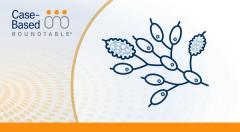
Loncastuximab Shows Durable Response in Higher-Risk R/R DLBCL Population
Matthew J. Matasar, MD, discusses the LOTIS-2 trial of loncastuximab tesirine in patients with relapsed/refractory diffuse large B-cell lymphoma.
Episodes in this series

Matthew J. Matasar, MD, regional care network medical site director at Memorial Sloan Kettering Cancer Center’s MSK Bergen site, discusses the LOTIS-2 trial (NCT03589469) of loncastuximab tesirine (Zylonta) in patients with relapsed/refractory diffuse large B-cell lymphoma (R/R DLBCL).
The single-arm phase 2 LOTIS-2 trial of loncastuximab enrolled 145 patients with R/R DLBCL who had received at least 2 prior lines of treatment. They were given loncastuximab at a loading dose of 150 μg/kg for 2 cycles followed by 75 μg/kg every 3 weeks for up to 1 year or until disease progression or unacceptable toxicity. The primary end point was overall response rate (ORR) while secondary end points included duration of response (DOR), progression-free survival (PFS), and overall survival (OS).
The ORR was 48.3%, with a 24.1% complete response (CR) rate. The median DOR for all 70 patients who responded was 12.58 months at the data cutoff of August 2020, while median DOR for the 35 patients with a CR was 13.37 months. At this data cutoff, the median PFS was 5.1 months, and the median OS was 9.5 months.
Matasar notes that this trial included a patient population reflecting real-world patients including those with high-risk characteristics and those who had prior stem cell transplant or chimeric antigen receptor (CAR) T-cell therapy, plus patients who were heavily pretreated with 4 or more prior lines of therapy. The results of this trial suggest that this agent will have efficacy in patients who have limited treatment options.
TRANSCRIPTION:
0:08 | LOTIS-2 is a single-arm phase 2 multicenter trial of loncastuximab or lonca for short, in the treatment of multiple relapsed DLBCL. To be eligible, patients had to have received 2 or more prior lines of therapy and felt to be ineligible for stem cell transplant or other curative options. It was monotherapy, patients received a loading dose at 150 μg/kg for 2 cycles, and then 75 μg/kg every 3 weeks for the rest of the year. The primary end point for the study was response with other key secondary end points including survival, DOR, and toxicity.
The results of the study were promising and the loncastuximab clearly does have activity in this heavily pretreated patient population, with an ORR of approximately 50%. It was 48% precisely, half of which were CRs and half of which were partial responses. The PFS overall for treated patients was just under 6 months. But for those that did respond, DOR was more favorable, with an overall DOR in excess of 10 months. And for those [who] achieved a CR, median duration of CR was over a year, suggesting that there are some patients who respond to this treatment and can enjoy durable disease control.
1:30 | There were a number of high-risk patient groups that were included in this study representing a more real-world patient population than some other studies have recently included. This includes transformed indolent lymphoma, high-grade lymphoma, patients who had had prior stem cell transplant or prior CAR T-cell therapy. And again, there was a subset of patients who have 4 or more prior lines of therapy—very heavily pretreated patients—and see these excellent results despite this high-risk patient population certainly is encouraging and supports the use of this agent in routine practice.


















































